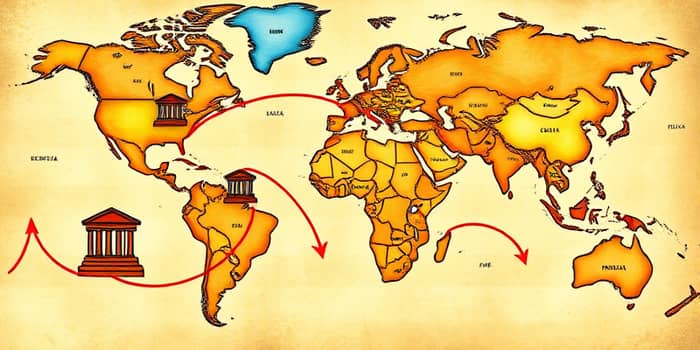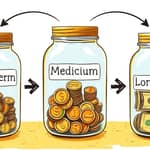
The intricate dance of capital across international borders often hinges on interest rate differentials, the unseen forces shaping investor decisions and currency valuations. By comparing the cost of borrowing in one economy with potential returns in another, these disparities become a critical driver of global capital movements. As central banks adjust benchmarks and market expectations shift, the appeal of high-yield destinations intensifies or fades. In this way, interest rate gaps not only reflect economic health but also actively sculpt financial flows worldwide.
Interest rate differentials measure the differences in interest rates between two countries or financial instruments at any given time. Investors keenly monitor these spreads as they signal potential returns, risks, and opportunities across various markets. A nation offering significantly higher rates can draw in foreign money seeking better yields, while lower-rate environments may encourage borrowing and offshore investments. Understanding these dynamics provides clarity on why currencies appreciate or depreciate and how capital reallocates in response to evolving monetary policies.
Interest rate differentials (IRD) have long been regarded as the primary measure of relative returns for cross-border investors. By subtracting one policy rate from another, the IRD quantifies how much more an investor stands to gain or lose by shifting funds internationally. For example, a country raising rates in response to inflationary pressures can widen its spread, making its assets comparatively more enticing. Conversely, monetary easing elsewhere can narrow gaps, tempering capital flows in a low-rate environment.
Consider two major economies: if the United Kingdom’s central bank sets its benchmark at 3% and the United States Federal Reserve holds rates at 1%, the IRD becomes 2%. Governments and investors alike recognize that higher interest rates compared to peers often ignite significant inflows. Such movements drive bond and equity purchases and directly influence the exchange rate, as investors swap dollars for pounds, fueling appreciation of the stronger-carry currency. The simplicity of this calculation belies its profound market impact.
At the heart of these flows lies the carry trade, a strategy built on earning the carry trade profits from rate disparities. Traders might borrow in a country with ultra-low borrowing costs, converting that currency into units of a nation offering superior yields. The returns from deposits or government bonds in the high-rate locale then cover the interest owed abroad while providing net gains equal to the spread. However, exchange rate swings and policy shifts can reverse anticipated profits.
Investors typically follow a sequence of actions to exploit IRDs:
Two cornerstone theories illuminate the relationship between interest rate differentials and exchange rates: interest rate parity and carry trade dynamics. Interest Rate Parity (IRP) posits that the difference between forward and spot rates should offset the interest gap between two currencies. In efficient markets, this parity condition ensures no arbitrage opportunities persist, as forward contracts adjust to reflect lending and borrowing costs across borders.
Despite IRP’s elegance, real-world frictions like capital controls, transaction fees, or sudden market sentiment shifts can create temporary arbitrage windows. The carry trade thrives on these inefficiencies, leveraging borrowed funds in low-rate economies to chase higher yields elsewhere. However, unexpected currency swings or abrupt central bank interventions can erode profits, turning a lucrative carry position into a significant loss in a short span.
Monetary policy decisions, inflation trends, and economic data releases form the backbone of interest rate differentials. When central banks tighten to combat inflation or loosen to stimulate growth, they alter the cost of capital and, in turn, influence global funding patterns. Alongside official policy, market expectations about future rate paths and geopolitical developments can shift investor sentiment rapidly. This interplay underscores the sensitivity to changing IRDs and growth dynamics across markets.
Key determinants include policy rate shifts reacting to economic data, diverse inflation paths affecting real yields, market volatility influencing appetite for high-yield assets, and investor expectations around future currency moves that can amplify or dampen carry trade attractions.
Global foreign direct investment (FDI) flows illustrate the tangible outcomes of interest rate differentials in action. After peaking around $1.5 trillion in 2019, pandemic-related uncertainty led to a sharp drop to $859 billion in 2020. By 2023, inflows rebounded to approximately $1.3 trillion, reflecting both policy divergences and shifting growth trajectories across regions.
While large economies like the United States and China dominate absolute flows, smaller dynamic markets often see FDI inflows as a larger share of GDP. Nations with robust growth prospects and relatively stable interest spreads can attract disproportionate investment relative to GDP, reflecting sensitivity to selective yield environments. These trends demonstrate that capital often chases both yield and stability when reallocating across borders.
Large-scale investment shifts driven by IRDs can introduce market instability and challenge monetary authorities. When rapid capital movements seeking higher returns surge into local economies, asset prices may soar, complicating inflation targets and potentially overheating markets. Conversely, abrupt outflows can trigger currency depreciation and tighten financial conditions unexpectedly. Policymakers must therefore strike a balance between open financial markets and protective measures designed to smooth volatile swings.
Governments and regulators can employ several measures to mitigate risks:
To harness the benefits of foreign investment while safeguarding economic stability, policymakers and investors alike can adopt forward-looking strategies. Central banks should communicate clear policy frameworks to anchor expectations, while governments invest in structural reforms that enhance resilience. For investors, disciplined risk management and hedging approaches can mitigate losses if currency or rate conditions shift unexpectedly.
Key best practices include:
Ultimately, interest rate differentials represent a powerful mechanism connecting global policies, economic fundamentals, and investor behavior. By carefully monitoring spreads and understanding their broader implications, market participants can navigate cross-border opportunities with greater confidence. Balanced regulatory frameworks and strategic policymaking further ensure that capital flows contribute to sustainable growth, rather than undue volatility. In this intricate web of rates and returns, informed action remains the best path to prosperity.
References













